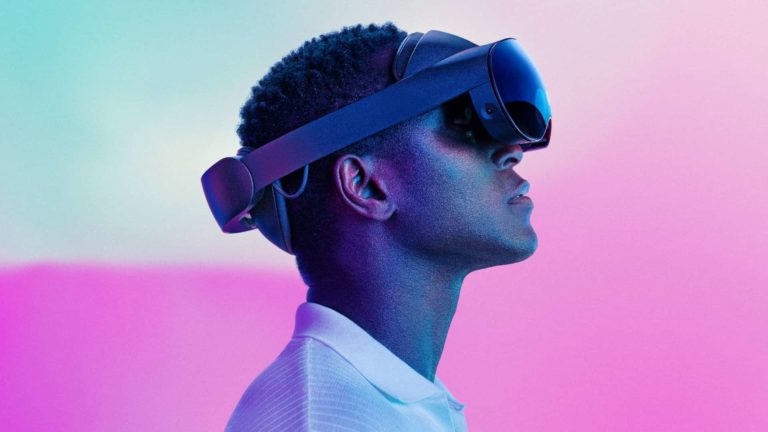
Artificial intelligence art – also known as generative-AI art – is evolving with the help of virtual reality, creating new gaming and entertainment experiences that are highly unique and personalized. VR and AI have improved over recent years and are more accessible to the average person.
The AI art experience is creative and collaborative while also inclusive to people lacking the skills or resources to engage in traditional mediums. The combination of AI and VR could potentially reshape the future of entertainment and art.
What Is the AI Art Experience?
AI art has exploded in popularity since 2020. Generators like the viral DALL-E service are changing how people approach and create art. These AI algorithms use generative adversarial networks, or GANs, which combine human input and artistic mimicking to create original artwork. Pieces range from comedic still lifes to portraits.
Many pieces of AI artwork are comedic and nonsensical, sparking a new niche of meme culture online, but others can be surprisingly dramatic and realistic. People who lack the money or skills to create their own original artwork can do so through AI algorithms instead. Inputting sample pictures or a text description allows anyone to create anything they want with the help of AI.
This process may sound effortless, but the AI art experience is highly collaborative between people and algorithms. As of 2022, AI is still heavily dependent on human input for creative tasks. It’s been used to create movie trailers, write creative prose and generate stunning artwork, but all these achievements required human-created content first. AI art combines a person’s creativity and an algorithm’s generative art and learning skills.
How VR Is Changing AI Art
VR is taking the AI art experience to the next level. Worldwide adoption of VR more than doubled between 2017 and 2022, rising in popularity alongside AI art. More affordable headsets like Meta’s Oculus Quest 2 have helped boost this cutting-edge technology over recent years. Artwork and graphics continue to be a struggle for virtual reality developers, though.
The main challenge is the sheer amount of drawing and design needed to create immersive VR spaces. Developing any modern videogame takes hundreds of hours and immense computer processing resources. Those demands are multiplied for virtual reality since everything needs to be visible from any angle in 360 degrees. However, people are excited about VR, and continuous growth relies on developing new games and experiences for the platform.
AI art is emerging as a potential solution, which is driving innovation in the technology itself. Over recent years, it has exploded in popularity and rapidly become more capable and accessible. In fact, it has gotten so good that professional artists are concerned about the future of their careers.
Generative VR Worlds
Just like AI is used to generate static artwork, developers are also using it to create interactive VR worlds. This is an approach known as stable diffusion VR, which uses artificial intelligence to generate virtual reality worlds in real-time. The main advantage is that it does not require massive amounts of computing power like in the past. As a result, VR worlds can be generated by AI on consumer-grade devices like affordable headsets, gaming consoles and PCs.
VR and AI art are forming a symbiotic relationship. VR games and experiences can be developed much faster with AI-generated art. At the same time, the AI art experience is taking on a whole new dimension thanks to VR, which is allowing people to explore AI-generated spaces in 3D.
AI is already being used on a rudimentary level in video game design. For example, Minecraft, one of the most popular video games in history, uses randomly and procedurally generated worlds, each unique. Simple AI has been used in non-player characters in video games for years. Other games, such as the popular AI Dungeon text-based game, are run almost entirely by AI with an algorithm making up scenarios as the player goes along.
AI artwork is the next evolution of video game design and development, and VR is the next big platform for gaming and entertainment. Combining the two is a no-brainer. For example, a VR game of the future could set up a core storyline while allowing players to choose the genre, art style and type of world they want to play in. An AI art generator could create a unique space, fantasy or dystopian world for them, allowing every player to experience the story in their own area.
This makes for a creative experience that is highly personalized and customizable. Players could even use AI-generated virtual reality spaces to create their own worlds or recreate their rooms in VR environments.
AI Art and VR: The Future of Entertainment
The AI art experience today is full of creativity, humor and collaboration. Whole communities are forming online around sharing the amazing and often comedic creations people use AI to generate. VR technology is taking AI art to new heights, moving it from a static 2D medium to an interactive 3D medium.
AI art is also helping VR evolve and improve development times and customization for new games and experiences. Together, these two technologies are shaping the future of art and entertainment.
 Devin Partida is Editor-in-Chief at ReHack Magazine and editorial contributor at AR Insider. See her work here and follow her @rehackmagazine.
Devin Partida is Editor-in-Chief at ReHack Magazine and editorial contributor at AR Insider. See her work here and follow her @rehackmagazine.






